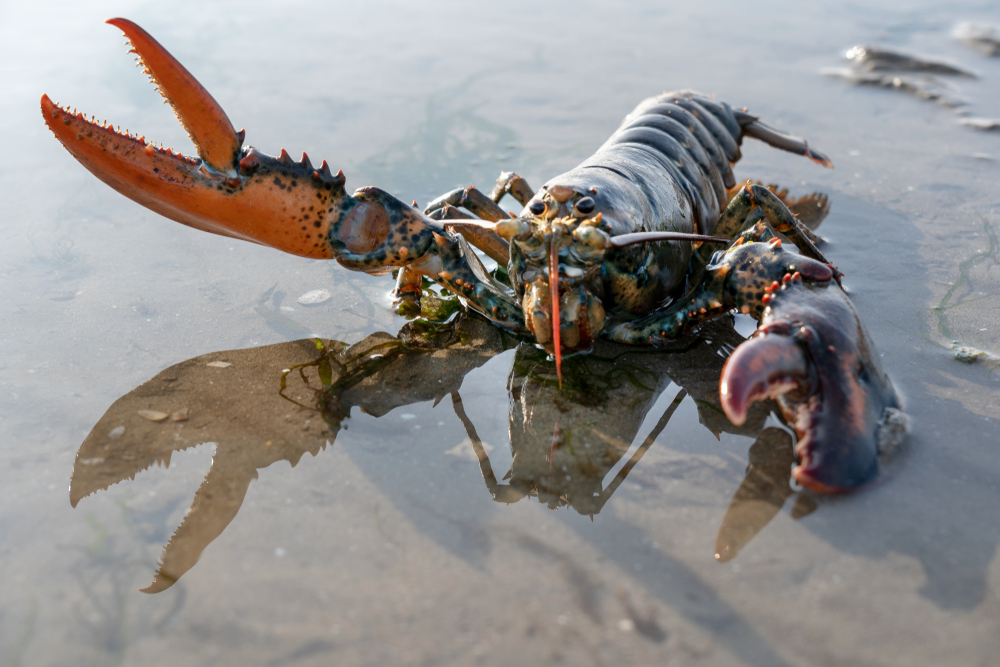Judging a Lobster by its Tail
Will DNA testing solve the mystery of identifying lobster age?
Age Ain't Nothing but a Number
How many individuals need to reproduce for a population to stay ecologically stable?
It may not be a question that has crossed your mind, but conservation scientists think about population dynamics like this all the time, particularly for species that humans are using as a food source. When it comes to fishing, it is not only important to leave enough male and female individuals to reproduce, but also to have enough individuals in the right age group for reproduction. Ensuring that there are enough reproductive-age members in a population is a necessary step to safer fishing and long-term survival of a species.
Is Beauty only Shell-Deep?
Once a lobster hatches from its egg, it floats and begins a series of shedding its skin, a process called molting. By the fourth molt, the lobster larva has officially made it to the juvenile stage.
Juvenile lobster can molt 25 times by the time they reach adulthood [3], and by that point, aging the crustacean becomes tricky business. Every few years, lobsters shed their entire exoskeleton and start fresh, building up a new hard shell, until it is time to repeat the cycle.
The European lobster has an estimated lifespan ranging 40 to 70 years [2], but the speedy rate of molting and effects of the environment on size means that physical traits are not reliable to identify lobster age.

Conservation scientists and fisherman are left making educated guesses as to which lobsters are safe to remove and hoping lobster populations can sustainably reproduce. This leaves the commercial European Lobster in a danger zone.
The Role of DNA
Assigning an age to a lobster may be an elusive task, but researchers at University of East Anglia in the U.K. are on the case. Martin Taylor, a molecular ecologist, and his team are the first to look at DNA methylation as a potential solution to identifying age in crustaceans.
DNA methylation is a biological mechanism characterized by methyl groups attaching on to strands of DNA. In humans, the rate of this methylation is correlated to the rate of aging and is at least partially dependent on the way people live their day to day lives. For example, diet, stress, and the environment can all play a role on the rate of methyl group accumulation.
The idea of environmental factors influencing DNA methylation has given way to the concept of an epigenetic clock: a method to understand the biological age of human bodies. Your chronological age may be 30, but biologically, your body may be older or younger based on DNA methylation.
The epigenetic clock can be used on a variety of species, and Taylor’s team decided it was time to test a biological clock on the mysterious lobsters. Researchers collected samples from the claw or leg of 155 lobsters of known ages, between 0 to 51 months. Samples were then sent to the Zymo Research Services team for targeted bisulfite sequencing, including primer design, validation and bioinformatics [1].
The exciting news? Chronical lobster age had a significant relationship to percent methylation [1].
Have We Cracked the Tail?
Taylor’s team brought attention to the impeding issue of identifying lobster age and its value in protecting commercial species of lobster. Their study found a significant linear relationship between lobster age and percent DNA methylation. Measuring methylation at these DNA sites shows promise as a future method to identify lobster age.
In the meantime, more work needs to be done. Taylor’s team focused their research on lobsters of known age from birth to about 4 years old. This leaves over 60 years’ worth of lobster lifespan to be studied for methylation patterns. Further studies are also needed of lobster populations for baselines of different climates, nutrients, and water quality.
Even if all the baselines are compiled, DNA extraction and analysis take both time and a variety of equipment that is not yet practical for lobster fishing in the real world. The industry is still a long way away from quick identification of lobsters’ age that could be utilized in real-world setting. But for now, Taylor’s novel research has excited conservationist and illuminated yet another possible application of biotechnology in today’s day and age.
If you would like to learn more about the Zymo Research Services available and how they might help your projects:
Learn MoreReferences
- Fairfield, E. A., et al. (2021, August 30). Ageing European lobsters (Homarus gammarus) using DNA methylation of evolutionarily conserved ribosomal DNA. Evolutionary Applications, 14(9), 2305-2318. Retrieved from https://onlinelibrary.wiley.com/doi/10.1111/eva.13296#eva13296-bib-007
- Sheehy et al., 1999 - https://onlinelibrary.wiley.com/doi/10.1111/eva.13296#eva13296-bib-0070
- University Maine, Lobster life cycle -- https://umaine.edu/lobsterinstitute/educational-resources/life-cycle-reproduction/


